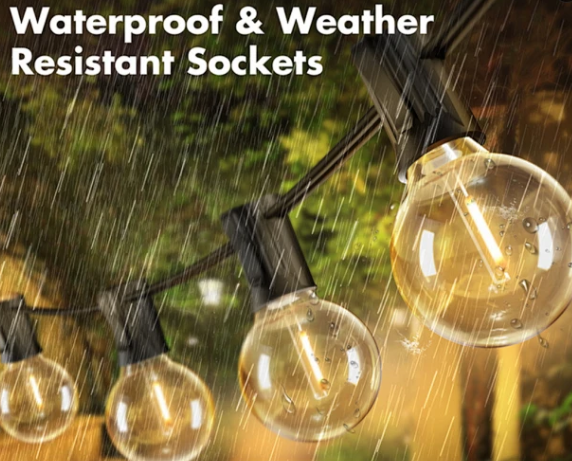Oct. 04, 2024
Always opt for lights specifically rated for outdoor use. Look for labels such as "IP44 rating," "suitable for wet locations," "weather-resistant," or "weatherproof" on the packaging.
The (IP) rating of most outdoor-grade string lights will determine how much water exposure they can withstand.
Ensure all electrical connections are properly sealed and tightened to prevent water ingress.
Use weatherproof outlet covers or "while-in-use" covers for outdoor electrical outlets.
Employ weather-resistant or outdoor-rated extension cords if needed.
Install lights under covered areas like porches, awnings, or roof overhangs when possible.
Avoid placing lights in areas with full exposure to rain.
Keep power sources and connections elevated off the ground to prevent water pooling around them.
For areas without natural cover, consider using clear plastic covers or tarps to shield the lights during rainy weather.
You can find specially designed covers for string lights or create your own using waterproof materials.
Use dielectric grease on connections to provide an additional barrier against moisture.
Consider using heat-shrink tubing or waterproof tape to seal connection points.
Secure light strands properly using sturdy mounting hardware like hooks, clips, or cable ties to prevent wind damage.
Avoid placing excessive strain on the light strands, which can damage wires and connections.
Periodically check for any signs of wear, loose connections, or damage.
Clean the lights and ensure all seals and covers are intact.
During severe weather conditions like heavy storms or snowfall, consider temporarily removing the lights or disconnecting them from power sources.
Inspect your current string lights for their IP rating and outdoor suitability.
Purchase weatherproof covers or plan a DIY solution for exposed sections of your lighting.
Check all connections and consider applying dielectric grease for added protection.


Copyright © Zhongshan Guochong Lighting Co.,Ltd.All Rights Reserved | Sitemap | Powered by 